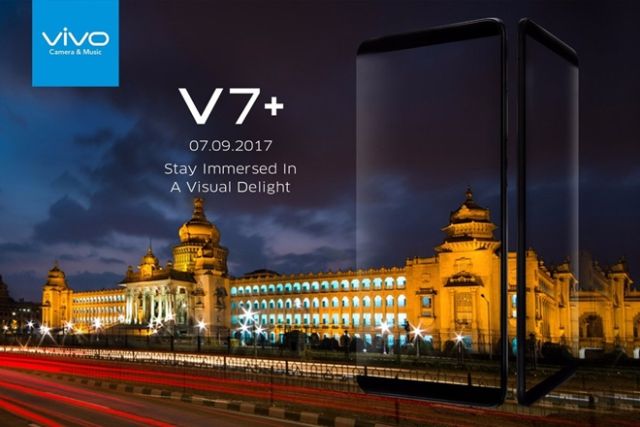By Sourabh Kulesh,
New Delhi : When it comes to the selfie-focused smartphones market in India, Chinese smartphone players Vivo and Oppo clearly rule the mid-price segment.
Expanding its selfie-focused series, Vivo has announced two devices — V7 and V7+ — with the latter being made available in November.
Launched now, the Rs 18,990 V7 is the scaled-down version of V7+ — the Rs 21,990 device that lured the selfie-loving generation in India with a 24MP front camera (f/2.0 aperture) and bezel-less display.
V7 has the same camera as V7+ but has a bit less battery capacity, on-board memory and display size.
Vivo V7 directly rivals the Rs 19,990 Oppo F5 which has a 20MP selfie shooter.
Let us see if Vivo V7 can become a mid-segment selfie winner.
Design-wise, the trimmed antenna lines running on the upper and lower edges at the back are a differentiating factor, giving a premium look to the device.
Encased in metal-finished plastic body on the back and 2.5D glass on the front, the device is light and fits well in the hand.
The key highlight of V7+ was its edge-to-edge 5.99-inch IPS “Full View” display that is similar to Samsung’s “Infinity Display” and LG’s “FullVision Display”.
The V7 display has similar 18:9 aspect ratio as the V7+. It has very thin bezels on the side and enough space on the top for the 24MP front camera and sensors.
The 24MP front shooter has a selfie portrait mode and supports HDR.
The “live photo” feature creates a moving image, instead of capturing a moment in time with a still photo.
Users can use voice command or hand gesture to trigger the camera. Selfies had nice details under good lighting conditions. In low-light situations, the fill flash helped click a good image.
At the back, the device has a 16MP sensor with f/2.0 aperture. The processing is quick thanks to a well-balanced hardware.
Vivo V7 is fitted with a Qualcomm Snapdragon 450 chipset with 4GB RAM. The on-board memory, however, has been reduced to 32GB.
It has 3,000mAh battery that was enough for a day’s run. Vivo V7 has Funtouch OS 3.2 on Android 7.1.2 Nougat with bloatware. The device has iPhone influence on the user interface.
The navigation keys can be altered depending on preference and can be hidden — just like we can do in Samsung’s Galaxy Note 8.
The V7 also has a face-recognition feature, something that Apple is banking upon in its “super-premium” iPhone X to unlock the device.
For a regular user, Vivo V7 is a very good performer and can handle tasks without puting much burden on the hardware.
We didn’t notice any issues related to the device getting heated up despite prolonged gaming, and it worked lag-free with multiple apps running in the background.
A larger display means we had more space for content consumption. Audio output through earphones was good.
What doesn’t work?
The quality of the photos depend on the lighting conditions. Well-lit areas gave good output, while photos taken under bad light from the rear camera struggled a bit with quality.
The competitors are offering Full-HD display in similar price bracket while V7 has HD screen.
The speakers too were not loud enough to do justice to the content being played.
Conclusion: Vivo has been successful with its devices solely on the camera quality and the amount of details they put in to make smartphones with balanced output. For a price tag of Rs 18,990, the device is a good choice for selfie-lovers.
(Sourabh Kulesh can be contacted at sourabh.k@ians.in)
—IANS






0 Comments